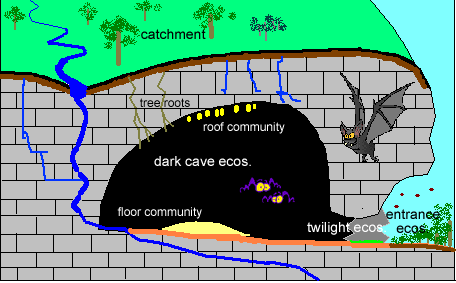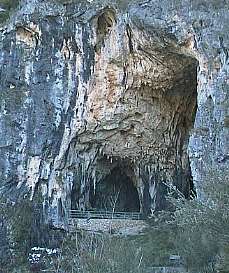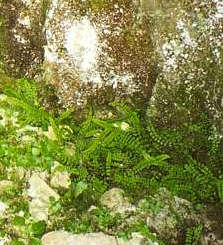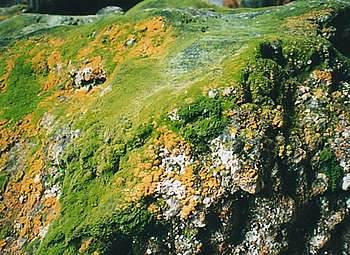Ecosystems at Risk: Limestone caves
5a. Ecology
 Caves
can be divided into three zones depending on how much light they receive:
entrance, twilight and dark. Light is a major limiting factor,
determining the size of the food chains and webs in an ecosystem. Food
chains show the flow of energy from sun to plants, which use light in
photosynthesis to make food, which is then passed on to herbivores and
carnivores. As the amount of light decreases, the amount of energy driving
the food chain decreases, the number and size of plants decreases and
fewer numbers of animals can be supported.
Caves
can be divided into three zones depending on how much light they receive:
entrance, twilight and dark. Light is a major limiting factor,
determining the size of the food chains and webs in an ecosystem. Food
chains show the flow of energy from sun to plants, which use light in
photosynthesis to make food, which is then passed on to herbivores and
carnivores. As the amount of light decreases, the amount of energy driving
the food chain decreases, the number and size of plants decreases and
fewer numbers of animals can be supported.
Entrance Ecosystem. Below right is the hillside opposite the cave entrance shown at left at Yarrangobilly. The cave entrance is a transition zone between the outside and the dark cave ecosystems. The climate of the entrance is modified by the cool air of the cave. The hillside is covered with a typical eucalypt woodland. This cave entrance has shrubs including banksias, grevilleas and tussock grasses but no trees.
 |
 |
| Twilight Ecosystem. As the amount of light decreases, in this case about 20 metres into the cave, the diversity and number of plants also decreases. This cave has ferns, lichens and algae growing on the rock. | |
 |
 |
|
 |